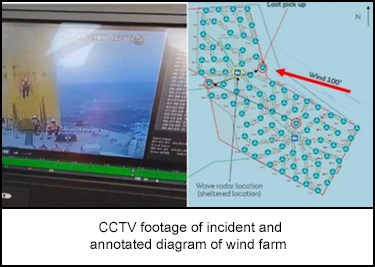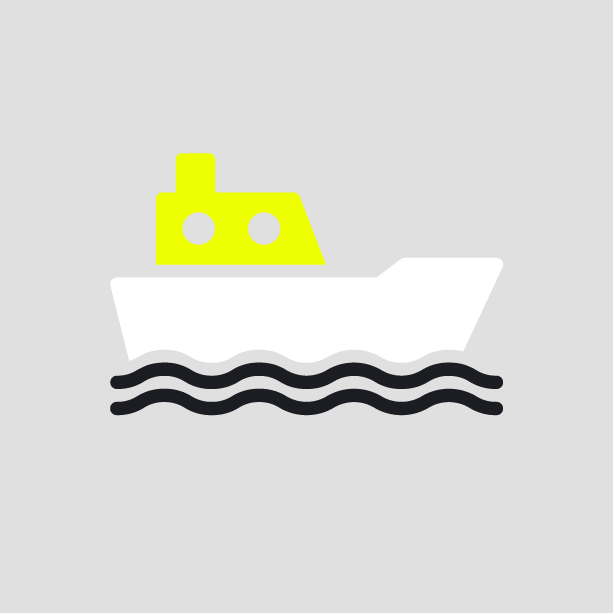-
What happened?
A team of four technicians were transferring from an offshore platform to a support vessel.
Two crew members were on the forward deck, one observing and one assisting.
The first two transfers were completed safely, but during the third attempt a large wave triggered an overspeed alarm that shut down the vessel’s main engine.
The vessel lost power and drifted away from the transfer platform. One deckhand, although tethered, fell and was thrown around the deck due to the vessel’s instability.
The main engine was restarted, but the secondary engine remained offline for over an hour because of a breaker trip and unfamiliarity with the reset process.

-
Why did it happen?
Communication before and during the transfer was inadequate, and hazard identification and risk assessment were not carried out effectively. Some crew members disregarded procedures because of time pressure.
A piece of weather monitoring equipment that had been permanently decommissioned was mistakenly believed to be working.
Weather conditions deteriorated quickly, and monitoring was insufficient.
The vessel crew did not have the necessary knowledge of recovery procedures, which delayed the restart and reduced safety.

-
What did they learn?
All personnel should adhere strictly to established procedures.
Clear understanding and communication of vessel limitations are essential for safe operations.
Forecasts should be treated with caution; rapid changes in conditions are possible and should be planned for.
Regular check-ins between vessels and coordinators should be implemented during worsening weather.
Lead technicians should provide real-time feedback on transfer conditions using a traffic-light-style score system.
Vessels should be performance-verified before being approved for use on-site to improve operational readiness.

-
Ask yourself or your crew
How can we make sure transfer procedures are always followed under pressure?
How should we plan operations when weather can deteriorate quickly?
What steps should be taken to confirm vessel readiness before use?
How can communication between technicians, vessels and coordinators be improved during transfers?

Add to homescreen
Content name
Select existing category:
Content name
New collection
Edit collection
What happened?
A team of four technicians were transferring from an offshore platform to a support vessel.
Two crew members were on the forward deck, one observing and one assisting.
The first two transfers were completed safely, but during the third attempt a large wave triggered an overspeed alarm that shut down the vessel’s main engine.
The vessel lost power and drifted away from the transfer platform. One deckhand, although tethered, fell and was thrown around the deck due to the vessel’s instability.
The main engine was restarted, but the secondary engine remained offline for over an hour because of a breaker trip and unfamiliarity with the reset process.

Why did it happen?
Communication before and during the transfer was inadequate, and hazard identification and risk assessment were not carried out effectively. Some crew members disregarded procedures because of time pressure.
A piece of weather monitoring equipment that had been permanently decommissioned was mistakenly believed to be working.
Weather conditions deteriorated quickly, and monitoring was insufficient.
The vessel crew did not have the necessary knowledge of recovery procedures, which delayed the restart and reduced safety.
What did they learn?
All personnel should adhere strictly to established procedures.
Clear understanding and communication of vessel limitations are essential for safe operations.
Forecasts should be treated with caution; rapid changes in conditions are possible and should be planned for.
Regular check-ins between vessels and coordinators should be implemented during worsening weather.
Lead technicians should provide real-time feedback on transfer conditions using a traffic-light-style score system.
Vessels should be performance-verified before being approved for use on-site to improve operational readiness.
Ask yourself or your crew
How can we make sure transfer procedures are always followed under pressure?
How should we plan operations when weather can deteriorate quickly?
What steps should be taken to confirm vessel readiness before use?
How can communication between technicians, vessels and coordinators be improved during transfers?
Rough seas disrupted a crew transfer. The vessel lost power, drifted, and a deckhand fell. One engine stayed offline for an hour due to reset issues.












